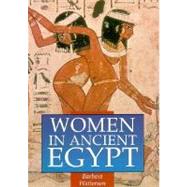|
Ancient Egypt under Pharaohs rule, very little deference in
law between male and female as both had same right on inheriting and owning property. Daughters could inherit property equal
to brothers. An equal right in inheritance of parental property is itself an indication to women right in that ancient society.
Women could manage their own property and could write will, as they wanted. Woman was in charge of the house and running it.
Woman education was not common only few high class could write thus only men could hold high ranked position in the government
and elsewhere. Overall speaking, only this culture could see women and men see in one eye. This indicates the disparity in
men and women status.
BOOKS:
Mistress of the House, Mistress of Heaven: Women in Ancient EgyptMasterpieces of Egyptian art from great American collections illuminate the role of women in ancient
Egyptian society. Here are stone and wood sculpture; wall painting; statuettes; mummy case and coffin; jewellery and utensils
in gold, faience, bronze and glass.
 "In ancient Egyptian society a woman was accorded legal rights equal to those of a man from the same social class and had
the same expectation of a life after death". Women in Ancient Egypt is a detailed and fascinating study of the often overlooked
contributions made by women of all classes to the political and social history of pharaonic Egypt, c. 3100 B.C. to 30 B.C.
Using evidence gleaned from written records, monuments, sculpture, tomb-paintings and material found in tombs, including objects
and human remains, the author has been able to build up an intriguing picture of the lives led by ancient Egyptian women throughout
the pharaonic period. The types of occupations and careers open to women are described; as are their domestic and personal
lives--marriage, health and childbirth; the family; household chores undertaken by women; and their clothing, jewellery and
beauty preparations. The women whose lives are fleshed out in these pages are largely the "little people" of history, women
who rarely exercised any power outside the home. In contrast, however, the final chapter deals with those women, surprisingly
few in number, whose influence on the political affairs of their country was considerable and legendary. The book is supplemented
by a collection of superb illustrations, a comprehensive bibliography and detailed references.
WOMEN AND CIVILISATIONS
|



